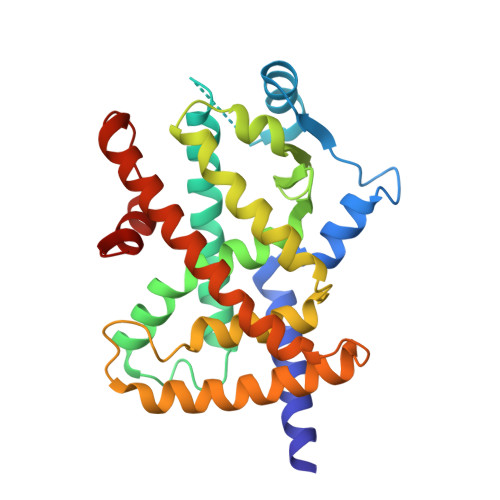Structure-Activity Relationship of 2,4-Dichloro-N-(3,5-dichloro-4-(quinolin-3-yloxy)phenyl)benzenesulfonamide (INT131) Analogs for PPAR gamma-Targeted Antidiabetics.
Frkic, R.L., He, Y., Rodriguez, B.B., Chang, M.R., Kuruvilla, D., Ciesla, A., Abell, A.D., Kamenecka, T.M., Griffin, P.R., Bruning, J.B.(2017) J Med Chem 60: 4584-4593
- PubMed: 28485590
- DOI: https://doi.org/10.1021/acs.jmedchem.6b01727
- Primary Citation of Related Structures:
5TTO - PubMed Abstract:
Peroxisome proliferator-activated receptor γ (PPARγ) is a nuclear receptor central to fatty acid and glucose homeostasis. PPARγ is the molecular target for type 2 diabetes mellitus (T2DM) therapeutics TZDs (thiazolidinediones), full agonists of PPARγ with robust antidiabetic properties, which are confounded with significant side effects. Partial agonists of PPARγ, such as INT131 (1), have displayed similar insulin-sensitizing efficacy as TZDs, but lack many side effects. To probe the structure-activity relationship (SAR) of the scaffold 1, we synthesized 14 analogs of compound 1 which revealed compounds with higher transcriptional potency for PPARγ and identification of moieties of the scaffold 1 key to high transcriptional potency. The sulfonamide linker is critical to activity, substitutions at position 4 of the benzene ring A were associated with higher transcriptional activity, substitutions at position 2 aided in tighter packing and activity, and the ring type and size of ring A affected the degree of activity.
Organizational Affiliation:
Department of Molecular Medicine, The Scripps Research Institute, Scripps Florida , Jupiter, Florida 33458, United States.















